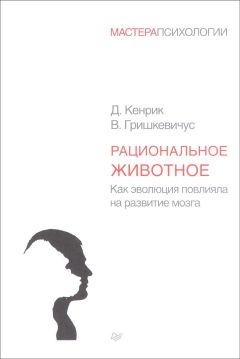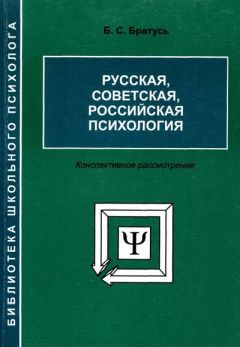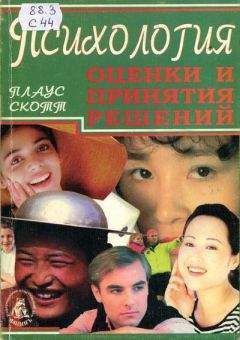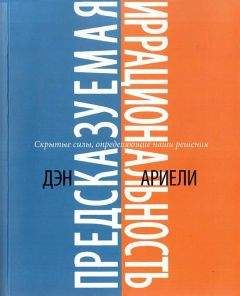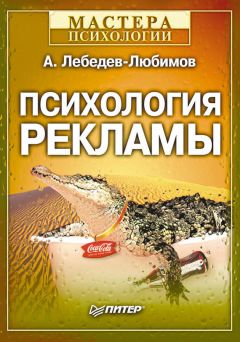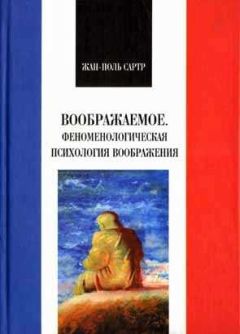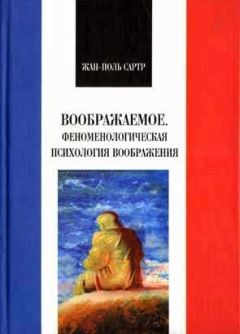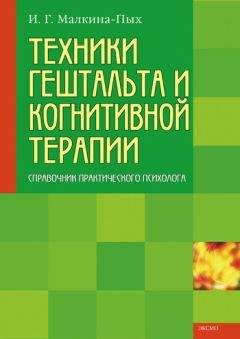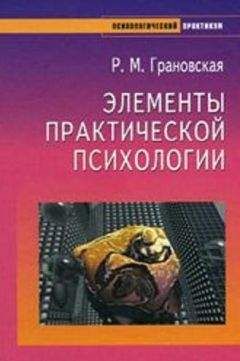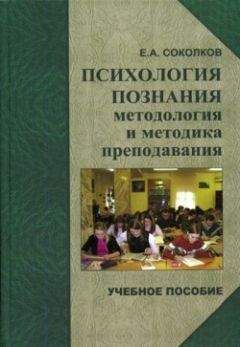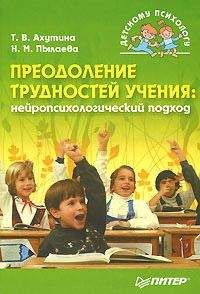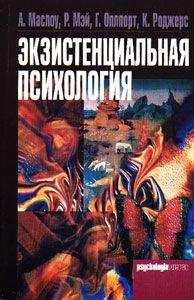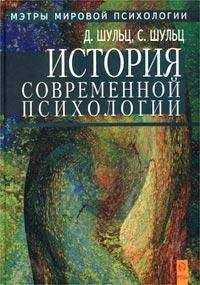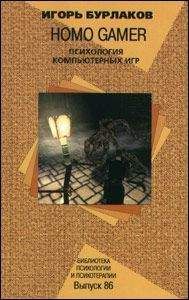Дайана Халперн - Психология критического мышления
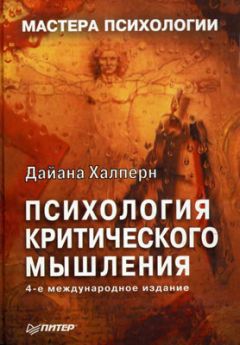
Скачивание начинается... Если скачивание не началось автоматически, пожалуйста нажмите на эту ссылку.
Жалоба
Напишите нам, и мы в срочном порядке примем меры.
Описание книги "Психология критического мышления"
Описание и краткое содержание "Психология критического мышления" читать бесплатно онлайн.
Эта книга написана в помощь тем, кто хочет научиться думать современно. Опираясь на новейшие достижения когнитивной психологии и свой уникальный педагогический опыт, Дайана Халперн разработала эффективную программу обучения навыкам «критического мышления». Данная книга может быть широко использована в преподавательской и методической работе, окажет неоценимую помощь в самообразовании, а кроме того, является своеобразным путеводителем по современной когнитивной психологии. Рекомендуется психологам, педагогам, философам, а также всем интересующимся когнитивной психологией, психологией творчества, теорией принятия решений.
Clarkson-Smith L., Halpern D. F. (1983). Can age related deficits in spatial memory be attenuated through the use of verbal coding? Experimental Aging Research, 9, 179–184.
Clinton's message to USA's students: Learn to earn. (1994. February 24). USA Today International Edition, p.6A.
The Cognition and Technology Group at Vanderbilt (1993). Toward integrated curricula: Possibilities from anchored instruction. In M. Rabinowitz (Ed.), Cognitive science foundations of instruction (pp. 33–56). Hillsdale, NJ: Lawrence Erlbaum Associates. Cohen G. (1989). Memory in the real world. Hillsdale,
NJ: Lawrence Erlbaum Associates. Collins A. F., Gathercole S. E., Conway M. A., Morris P. E. (Eds.). (1993). Theories of memory. Hillsdale, NJ: Lawrence Erlbaum Associates. Collins C, Mangieri J. N. (Eds.). (1992). Teaching thinking: An agenda for the 21st century. Hillsdale, NJ: Lawrence Erlbaum Associates. Copi I. M. (1986). Informal logic. New York; Macmillan.
Cordes C. (1983, April). Search goes on for «best» ways to learn science. American Psychological Association Monitor, pp. 7–8.
Coughlin E. K. (1993, November 10). When people make up their minds, psychologist says, they often do not really make up their minds at all. The Chronicle of Higher Education, pp. A9, A15.
Covington M. V. (1987). Instruction in problem solving and planning. In S. L. Friedman, E. K. Scholnick R. R. Cocking (Eds.), Blueprints for thinking: The role of planning in cognitive development (pp. 469–511). Cambridge, MA: Cambridge University Press. Covington M. V., Crutchfield R. S., Davies L. В., 01-ton R. M., Jr. (1974). The productive thinking program. Columbus, OH: Charles E. Merrill. Craik F. I. M., Salthouse T. A. (Eds.). (1992). The handbook of aging and cognition. Hillsdale, NJ: Lawrence Erlbaum Associates.
Crovitz H. F. (1970). Calton's walk: Methods for the analysis of thinking, intelligence and creativity. New York: Harper Row.
Crutchfield R. S. (1966). Creative thinking in children: Its teaching and testing. In O. G. Brim, Jr., R. S. Crutchfield W. H. Holtzman (Eds.), Intelligence: Perspectives 1965, The Terman.Otis Memorial Lectures. New York: Harcourt, Brace World. Dahlstrom G. W. (1993). Tests: Small samples, large consequences. American Psychologist, 48(4), 393–399.
Darner Т. E. (1987). Attacking faulty reasoning (2nd ed.). Belmont, CA: Wadsworth.
d'Angelo E. (1971). The teaching of critical thinking. Amsterdam: Gruner.
DavisG.A.,Roweton W. (1968). Using idea checklists with college students: Overcoming resistance. Journal of Psychology, 70, 221–226.
Davis G. A., Scott J. A. (Eds.). (1971). Training creative thinking. New York: Holt, Rinehart Winston.
Dawes R. M. (1979). The robust beauty of improper linear models in decision making. American Psychologist, 34, 571–582.
Dawes R. M. (1988). Rational choice in an uncertain world. New York: Harcourt, Brace, Jovanovich.
Dawes R. M. (1989). Experience and validity of clinical judgment: The illusory correlation. Behavioral Sciences and the Law, 7, 457–467.
Dawes R. M. (1993, June 9). Finding guidelines for tough decisions. The Chronicle of Higher Education, p. A40.
Dawes R. M. (1994). House of cards: Psychology and psychotherapy built on myth. New York: The Free Press.
Day R. S., Rodin G. C, Stoltzfus E. R. (1990, March 31). Alternative representations for medication instructions: Effects on young and old adults. Paper presented at the 3rd Cognitive Aging Conference, Atlanta.
DeBono E. (1967). The use of lateral thinking. London: Ebenezer Bayles and Son, Limited.
DeBono.E. (1968). New think: The use of lateral thinking in the generation of new ideas. New York: Basic Books.
DeBono. E. (1976). Teaching thinking. London: Temple Smith.
DeBono. E. (1977). Information processing and new ideas — lateral and vertical thinking. In S. J. Par-nes R. B. Noller A. M. Biondi (Eds.), Guide to creative action: Revised edition of creative behavior guidebook. New York: Scribner's.
DeBono E. (1991). Teaching thinking. London: Penguin.
DecykB. N. (1994). Using examples to teach concepts. In D. F. Halpern (Ed.) Changing college classrooms: New teaching and learning strategies for an increasingly complex world (pp. 39–63). San Francisco: Jossey-Bass.
deGroot, A. A. (1983). Heuristics, mental programs, and intelligence. In R. Groner M. Groner, W. F. Bis-chof (Eds.), Methods of heuristics (pp. 109–129). Hillsdale, NJ: Lawrence Erlbaum Associates.
deGroot A. D. (1966). Perception and memory versus thought: Some old ideas and recent findings. In B. Kleinmuntz (Ed.), Problem solving: Research, method and theory. New York: Wiley.
De Lopez R. S. (1992, June 16). Promote thinking, say university leaders. The News, Mexico City, p. B4.
Dember W. N., Jenkins J. J., Teyler T. (1984). General psychology (2nd ed.). Hillsdale, NJ: Lawrence Erlbaum Associates.
Derry S., Levin J. /?., Schauble L. (1995). Stimulating statistical thinking through situated simulations. In D. F. Halpern S. G. Nummedal (Eds.), Psychologists teach critical thinking [Special issue]. Teaching of Psychology, 22, 51–57.
Dewey J. (1933). How we think: A restatement of the relation of reflective thinking to the educative process. Boston: Heath.
Doolittle J. H. (1995). Using riddles and interactive computer games to teach problem solving. In D. F. Halpern S. G. Nummedal (Eds.), Psychologists teach critical thinking [Special Issue], Teaching of Psychology, 22, 33–36.
Domer D. (1983). Heuristics and cognition in complex systems. In R. Groner, M. Groner, W. F. Bischof (Eds.), Methods of heuristics (pp. 89-107). Hills-dale, NJ: Lawrence Erlbaum Associates.
Dreman D. (1979). Contrarian investment strategy: The psychology of the stock market success. New York: Random House.
Duncan С. P. (1961). Attempts to influence performance on an insight problem. Psychological Reports, 9, 35–42.
Duncker K. (1945). On problem solving. Psychological Monographs (Whole No. 270).
Eagly A., Chaiken S. (1993). The psychology of attitudes. New York: Harcourt Brace.
Edwards J., Baldauf В., Jr. (1987). The effects of the CORT.l thinking skills program on students. In D. N. Perkins, I. Lockhead, J. Bishop (Eds.), Thinking: The second international conference (pp. 453–473). Hillsdale, NJ: Lawrence Erlbaum Associates.
Ekman P. (1992). Telling lies: Clues to deceit in the marketplace, politics and marriage. New York: Norton.
Evans J. St. В. Т. (1989). Bias m human reasoning. Causes and consequences. Hillsdale, NJ: Lawrence Erlbaum Associates.
Evans J. St. B. T.,Newstead,S.E. (1993). Human reasoning: The psychology of deduction. Hillsdale, NJ: Lawrence Erlbaum Associates.
Eylon В., Linn M. С (1988. Fall). Learning and instruction: An examination of four research perspectives in science education. Review of Educational Research, pp. 251–301.
Facione P. (1991, August). Teaching college-level critical thinking skills. Paper presented at the 11th Annual International Conference on Critical Thinking and Educational Reform, Sonoma, CA.
Ferguson G. (1981). Architecture. In N. L. Smith (Ed.). Metaphors for evolution: Soureces of new methods. Beverly Hills, CA: Sage.
Festinger L. (Ed.). (1964). Conflict, decision and dissonance. Palo Alto, CA: Stanford University Press.
Festinger I., Riecken И. W., Schacter, S. (1956). When prophecy fails. Minneapolis: University of Minnesota Press.
Feyerabend P. (1975). Against method. London: Verso.
Feynman R. (1989). What do you care what other people think? New York: Bantam.
Finke R. A., Ward Т. В., Smith S. M. (1992). Creative cognition: Theory, research, and applications. Cambridge, MA: Bradford.
Fischer G. W., Johnson E. J. (1986). Behavioral decision theory and political decision making. In R. R. Lau D. O. Soars (Eds.), The 19th Annual Carnegie Symposium on Cognition: Political Cognition (pp 55–65) Hillsdale, NJ: Lawrence Erlbaum Associates.
Fischoff B. (1975). Hindsight^foresight: The effect of outcome knowledge on Judgment under uncertainty. Journal of Experimental Psychology: Human Perception and Performance, 1, 288–299.
Fischhoff B. (1993, March/April). Controversies over risk: Psychological perspective on competence. Psychological Science Agenda, 6, 8–9.
Fischoff В., Lichtenstein S., Slouic P., Derby S. L, Keeney R. L. (1981). Acceptable risk. Cambridge, England: Cambridge University Press.
Fisher R., Ury W. (1991). Getting to «yes»: Negotiating agreement without giving in (2nd ed.). New York: Penguin.
Fiske S. T. (1993). Controlling other people: The impact of power on stereotyping. American Psychologist, 48, 621–628.
Fiske S. T, Taylor S. E. (1984). Social cognition. New York: Random House. Fixx J F. (1978). Solve it. New York: Doubleday
Flesph /?. (1951). The art of clear thinking. New York: Harper Row.
Fogelin R. J. (1987). Understanding arguments, an introduction to informal logic (3rd ed.). New York: Harcourt Brace.
Fong G. Т., Krantz D., Nisbett R. E. (1986). The effects of statistical training on thinking about everyday problems. Cognitive Psychology, 18, 253–292.
Fong G. Т., Nisbett. R. E. (1991). Immediate and delayed transfer of training effects in statistical reasoning. Journal of Experimental Psychology: Human Leanning and Cognition. 120, 34–45.
Footnotes. (1994, April 20). The Chronicle of Higher Education.
Fox L. S., Marsh G., Crandall Jr., J. С (1983, April 30). The effect of college classroom experiences on formal operational thinking. Paper presented at the 1983 Annual Convention of the Western Psychological Association, San Francisco.
Frammolino R. (1993, December 17). Most college GEDs fail simple tests, study finds. The Los Angeles Times, pp. A41, A43.
Frazier K. (Ed.). (1991). The hundredth monkey and other paradigms of the paranormal. Buffalo, NY: Prometheus.
Friedman S. L., Scholnick E. K., Cocking R. R. (Eds.). (1987). Blueprints for thinking: The role of planning jn cognitive development. Cambridge, MA: Cambridge University Press.
Fruzzetti A. E., Toland K., Teller S. A., Loftus E. A. (1992). Memory and eyewitness testimony. In M. M. Gruneberg and P. E. Morris (Eds.), Aspects of memory: The practical aspects (Vol. 1) 2nd ed. New York: Routledge.
Gardner H. (1982). Art, mind and brain: A cognitive approach to creativity. New York: Basic Books.
Gardner H. (1983). Frames of mind: The theory of multiple intelligences. New York Basic Books.
Gardner H. (1985). The mind's new science: A history of the cognitive revolution. New York: Basic Books. Gardner H. (1989). To open minds. New York: Basic Books.
Gardner H. (1993). Creating minds: An anatomy of creativity seen through the lives of Freud, Einstein, Picasso, Stravinsky, Eliot, Graham, and Gandhi. New York- Basic Books.
Garfield J., Ahlgren, A. (1988). Difficulties in learning basic concepts in probability and statistics: Implications for research. Journal [or Research in Mathematics Education, 19(1), 44–63.
Garnham A., Oakhill J. (1994). Thinking and reasoning. Oxford, England: Blackwe.
Geiselman R. E., Fisher R. P. (1985, December). Interviewing victims and witnesses of crime. Research in Brief, National Institute of justice, 1–4.
Gentner D., Gentner D. R. (1983). Flowing water or teeming crowds: Mental models of electricity. In D. Centner A. L. Stevens (Eds.), Mental models. Hillsdale, NJ: Lawrence Erlbaum Associates.
Gerbner G., Grass L., Morgan M., Signorielli N. (1980). Violence profile No. 11: Trends in network television drama and viewer conceptions of social reality. Philadelphia: Annennberg School of Communication.
Gick M. I., Holyoak K. (1980). Analogical problem solving. Cognitive Psychology, 12, 306–355.
Gifford-Jones W. (1977). What every woman should know about hysterectomy. New York: Funk Wagnalls.
Gilbreth F.B.(\963). Cheaper by the dozen. New York: Crowell.
Gilhooly K. J. (1987). Mental modeling: A framework for the study of thinking. In D. N. Perkins, J. Loch-head. J. Bishop (Eds.), Thinking: The second international conference (pp. 19–32). Hillsdale, NJ: Lawrence Erlbaum Associates.
Gillette R. (1987, December 4). Exotic ways to learn doubted by U.S. study. The Wall Street Journal. pp. 1, 32.
Gilovich T. (1991). How we know what isn't so: The fallibility of human reason in everyday life. New York: Macmillan.
Glaser R. (1984). Education and thinking: The role of knowledge. American Psychologist, 39,93-104.
Glaser R. (1992). Expert knowledge and processes of thinking. In D. F. Halpern (Ed.), Enhancing thinking skills in the sciences and mathematics (pp. 63–76). Hillsdale, NJ: Lawrence Erlbaum Associates.
Glucksberg S., Weisberg R. W. (1966). Verbal behavior and problem solving: Some effects of labeling in a functional fixedness problem. Journal of Experimental Psychology, 71, 659–664.
Подписывайтесь на наши страницы в социальных сетях.
Будьте в курсе последних книжных новинок, комментируйте, обсуждайте. Мы ждём Вас!
Похожие книги на "Психология критического мышления"
Книги похожие на "Психология критического мышления" читать онлайн или скачать бесплатно полные версии.
Мы рекомендуем Вам зарегистрироваться либо войти на сайт под своим именем.
Отзывы о "Дайана Халперн - Психология критического мышления"
Отзывы читателей о книге "Психология критического мышления", комментарии и мнения людей о произведении.





